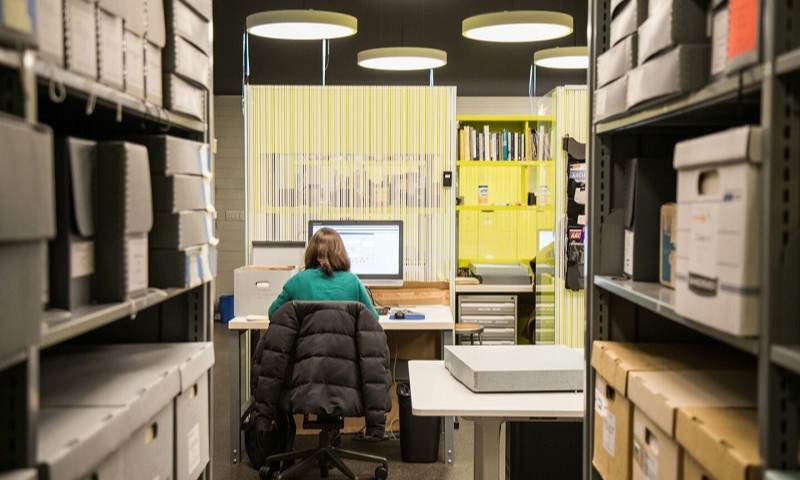Regulatory Revelations: Navigating Blockchain in Student Data Management
In the ever-changing regulatory landscape for student data management with blockchain, it’s a wild ride to stay on top of the rules. Let’s face it, blockchain is the new kid on the block in the realm of student data, and with it comes a maze of laws and regulations. From GDPR’s tight grip to FERPA’s watchful eyes, my journey here is to unravel the complex threads of compliance and lead you through the labyrinth. And believe me, it’s not just a walk in the park. With blockchain, we’re crafting the future of privacy and records management in schools, but the path is peppered with hurdles. Stick with me, and we’ll decode the cryptic world of legalities, make sense of smart contracts, and overcome adoption barriers. Ready to launch schools into tomorrow? Let’s pioneer a system that’s not just about keeping up, but being ahead. Buckle up, and let’s get this regulatory expedition started!
Deciphering the Legal Landscape for Blockchain in Education
GDPR Compliance for Student Data on Blockchain
Are you curious about how schools keep your kids’ data safe using blockchain? Schools must follow strict rules when they put student information on a blockchain system. The big rule in Europe is GDPR. GDPR says schools have to protect your kids’ info and let you see it if you want. Imagine a digital chest that locks your child’s report card away. Only you and the school have the key. That’s what GDPR does. It makes sure the chest stays locked tight and info safe.
Now, blockchain can help schools follow these rules, but it’s tricky. Schools have to think about who can see the info and how to keep it safe. They need to make sure that when your child’s info goes on the blockchain, only the right people can see it. They can’t let just anyone peek at your child’s grades or personal details. So, schools use fancy math—called encryption—to lock up the info. This means only you, the school, or someone with permission can unlock it.
Schools in other places use blockchain too, but they have their rules. In the U.S., they’ve got FERPA. FERPA helps keep student info private and lets parents have a say.
FERPA Requirements and Decentralized Ledgers
What about in America? They’ve got their own rule for student info. It’s called FERPA. FERPA is like a set of road rules for student info that schools must drive by. It makes sure parents can see their kid’s school records and says who else can look at them. Think of FERPA as a traffic light. It tells schools when to go, stop, or slow down when sharing your child’s data.
Now, decentralizing means spreading out your child’s school records across many computers. This makes the data less likely to get lost or stolen. It’s like giving copies of your kid’s art project to all your relatives. Even if one gets spilled on, you have plenty of clean copies left.
Blockchain does this really well. But even with blockchain, schools have to play by FERPA’s rules. They make sure that student info doesn’t just float around for anyone to grab. And if a kid transfers to a school in a different country? The rules still apply, so their info is safe.
It’s a lot for schools to keep track of, but it’s all to keep student data safe. That way, parents can chill, knowing their kid’s info is locked up tighter than their diary. Keeping student data safe on a blockchain is like a team effort in a relay race. Everyone, from teachers to tech folks, has to pass the baton well. If one person trips, it could be a mess. So, they train, follow the rules, and keep the race smooth and safe.
Innovating Student Privacy and Records Management with Blockchain
Securing Student Information with Data Encryption and Blockchain
Schools handle lots of personal details. Kids’ records must stay safe. Blockchain can help make this happen. It uses math to encrypt, or lock away, data so only chosen people can see it. Now, you may ask, “How does blockchain boost student privacy?”
Well, blockchain does two big things. It spreads data across many computers. This means if one computer has a problem, the data is still okay. It also locks data with strong codes that are tough to crack.
In short, blockchain keeps student details more secure than old-school systems. With these codes, student info stays private. And because it’s spread out, it’s harder to lose or destroy important details.
But there’s more! Teachers and parents worry about who can see student data. Blockchain lets schools set who has access. It can also make data sharing with apps and services safer.
As experts, we have to think of laws like GDPR and FERPA too. These laws say schools must protect student info. Blockchain helps do just that. It’s like a safe where only those who should see the student’s data can.
The Role of Smart Contracts in Managing Education Records
Now let’s talk about smart contracts. You might wonder, “What are smart contracts and why are they vital for student records?”
Smart contracts are like promises made of code. They live on the blockchain and act when certain things are done. For managing student records, they can do many things without needing people to check on them all the time.
They make sure rules are followed. Say a student or parent agrees to share records with a college. A smart contract will see that this happens right, without leaking info or messing up.
With smart contracts, schools can manage records smoothly. They make tasks faster and keep mistakes low. This tech can help when students move schools or need their grades sent somewhere. Plus, they can help with keeping track of who said yes to sharing info, so everyone knows the deal.
Smart contracts help keep things fair and clear. With them, blockchain makes managing student data safer and more accurate. It’s changing how schools handle records, and that’s big news for everyone’s privacy.
Overcoming the Barriers to Blockchain Adoption in Schools
Addressing Data Governance in Decentralized Student Databases
Let’s break down what it means to have data governance in school. Imagine a school, like a big locker filled with student info. Every paper inside is a student’s data, like grades and attendance. In the old days, this locker had one lock, and the school had the key. Simple, right? Now, enter blockchain, a new kind of lock. This lock is special because many keys can open it—not just one. This means student details are spread across many blocks in a chain, not just in a single place.
The trick is, how do we keep it all in order? We need rules. Rules that say who can peek into that locker and when. This is where the smart grown-ups come in, making sure student privacy protection is top-notch. When schools use a blockchain student information system, student facts stay safe and sound. It’s like giving everyone their own secret decoder ring, only showing them what they need to see.
Mitigating Challenges of Regulatory Compliance Issues
Now, onto regulatory hoops. It’s like this: there’re big rules for how student details are kept and shared. Two huge names are GDPR and FERPA. Think of GDPR as a rule book for kids in a playground. It tells them how to play nice with others’ secrets, mainly if they live in Europe. Then there’s FERPA, like a promise schools make to handle student info with care, especially in the USA.
So, if a school wants to use blockchain for educational institutions, it has to follow these rule books. And boy, can it be a maze! But it’s super important because it keeps everyone playing fair. For example, smart contracts for student records let schools make pinky promises with the computer, saying they will only use student facts in ways that are okay with the rules.
We take personal data management in schools seriously. We can’t just lock student info behind a code and then lose the key. We must stay sharp and make sure things stay out of the wrong hands. That’s why folks like me guide schools—the smart educators—so they can be like tech ninjas, using blockchain for good while playing by the rules.
Let me tell you, it’s not easy-peasy. Sometimes legal stuff can get in the way, making it hard for schools to jump onto the blockchain bandwagon. And no school wants an oopsie, like a data leak. That’s worse than getting gum stuck in your hair! It’s why educational data breach laws exist.
But the goal is clear: keep student secrets safe with blockchain. This means putting up virtual “Keep Out” signs and using tech that’s harder to break than a double-dare. Plus, it’s got to be clear as glass on who has the key to the info locker, what they can look at, and who says it’s okay.
Overcoming these barriers isn’t a walk in the park. It’s more like a game of superhero dodgeball. But, when we follow the rules and play smart, blockchain can turn schools into castles of trust, with moats of security around our kids’ most precious details. And isn’t that a future worth aiming for?
Pioneering Future-Ready Education Systems through Blockchain
Ensuring Data Integrity and Validating Educational Credentials
Blockchains change how we keep student records safe. This tech acts like a secure vault. Only select people can peek inside. It proves student grades and awards are real. Schools use blockchain to stop cheats and errors.
Say goodbye to fake diplomas! Blockchain keeps a check on educational creds. Each record is a block that links to the next, making a chain no one can break. This means no mix-ups, only trusty info. Schools love this.
Now, let me tell you a secret. Blockchains are good at keeping student data safe. They are tough to mess with. Each block is sealed tight with math. Think of it as a puzzle that’s a headache to solve. That’s how it shields student info.
Facilitating Transparency and Cross-border Student Data Transfer
Let’s chat about student data across borders. It’s a big deal. Kids move countries and need their school stuff to follow. Blockchain makes this smooth. It’s like a passport for student data. It crosses the ocean without a splash.
Schools must talk to each other, right? Well, blockchain is king at sharing data. But there’s a rule – it keeps student secrets. It shares only if the student says, “Yes, go ahead!”
What if John from Spain goes to study in Canada? His grades need to fly over safely. Blockchain beams his records over fast and without tricks. His new school gets his grades, no hitches. It’s all clear and above board.
Keep in mind, cross-border data sharing is ticklish. Laws come into play. The good news is, blockchain respects rules like GDPR and FERPA. It cares for student data like a guard dog.
So, imagine a world where school records move free and safe. That’s what blockchain does. It unties knots in data sharing. It brings a shiny future to schools. And it makes sure no secrets get spilled.
We’ve dived deep into the blockchain’s role in changing education. We explored how it meets GDPR and FERPA needs, making sure student data is safe. We saw how encryptions keep student info secure and how smart contracts manage education records well.
We also tackled the tough parts of bringing blockchain into schools. Dealing with who controls the data and fitting new rules into schools were big ones. Yet, the promise of blockchain for future-ready education shines bright. We talked about keeping data true and honest and making it easier for students to move across borders with their education details.
So, what’s the final say? Blockchain in schools could really mix things up for the better. We’re looking at safer, smarter ways to handle student info. Sure, it’s not all smooth sailing—there are hurdles to clear. But when we do? We’re set for an exciting leap in how we learn and teach. Let’s get ready for that future!
Q&A :
How is blockchain technology shaping the regulatory landscape for student data management?
Blockchain is revolutionizing various sectors, and in the realm of student data management, it offers enhanced security and privacy. Regulatory bodies are evaluating how blockchain’s immutable records and transparency can align with data protection laws like GDPR or FERPA while still safeguarding student information. They are exploring frameworks to ensure that blockchain solutions don’t compromise student privacy rights and adhere to educational policies.
What are the benefits of using blockchain for student data management in terms of compliance?
Blockchain can simplify compliance with educational regulations by providing a secure and unalterable record of student data. It ensures accuracy and consistency in data management, which is crucial for meeting regulatory standards. As blockchain platforms are decentralized, they can potentially reduce the risks of data breaches and unauthorized access, thus aiding institutions in maintaining compliance with laws governing student information.
What challenges do educational institutions face when integrating blockchain into student data management systems?
Incorporating blockchain into existing student data management systems poses technical and regulatory challenges. Education institutions must consider interoperability with current systems, the cost of implementation, and the need for staff training. Additionally, they must navigate evolving regulations concerning student data privacy and ensure their blockchain solutions are in strict conformity with such laws.
Are there existing regulations specifically addressing the use of blockchain for student data management?
As of now, explicit regulations targeting the use of blockchain for student data management specifically are still in the nascent stages. Regulations would need to be crafted to cover the nuances associated with blockchain technology while still upholding the overarching principles of student data privacy and security. Over time, we can anticipate more specific guidelines emerging as the technology becomes more integrated into the sector.
How can educational institutions stay ahead of regulatory changes concerning blockchain and student data?
To remain proactive, educational institutions should monitor legislative developments and participate in discussions about blockchain technology in education. Establishing a compliance team that understands both the technical aspects of blockchain and the legal implications for student data is crucial. Engaging with blockchain experts and legal consultants who specialize in education technology can also help institutions navigate this evolving landscape effectively.


